If Jeffrey Epstein’s death on 10 August 2019 reads like the opening of a spy thriller – a lone prisoner found hanging in a high-security lockup – that’s no coincidence. But unlike a neat ending, his demise only uncovers a new labyrinth of questions.
The official story was suicide by hanging, yet forensic details and prison logs strain credulity. Renowned pathologist Dr. Michael Baden, hired by Epstein’s family, pointed out that Epstein’s neck bore three fractures “that I’ve never seen” in any of a thousand jail hangings. New York’s medical examiner Dr. Barbara Sampson “stands firmly” by suicide, but her finding has been hotly disputed. Epstein’s body was discovered at 6:33 AM, yet Baden insists the financier likely died around 4:30 AM. Such a gap – with no guards observing him for hours, cameras inexplicably off, and both custody officers asleep – is “almost impossible,” noted a fellow pathologist. Moreover, Epstein’s first supposed suicide attempt – a chest-down slip on 23 July – now looks suspect. The alleged incident was not in jail records, but later emerged in internal memos; Epstein himself claimed a cellmate assaulted him and that he was punished with solitary confinement.
These contradictions add weight to the theory that Epstein was silenced, not self-slain. Forensic clues are deeply anomalous: Baden found Epstein’s broken hyoid bone in two places, consistent with high-force strangulation, whereas suicides “rarely” shatter the neck. (New York’s autopsy report downplayed this, noting hyoid breaks can occur in hanging – but such triple fractures were unheard of in Deputy Chief Sampson’s 25-year tenure.) Equally strange is the timeline. Epstein was removed from suicide watch 36 hours before death; his cellmate was mysteriously transferred out on 9 August; internal cameras malfunctioned overnight; and the two guards assigned to him were allegedly nodding off. This curious chain was punctuated by Prosecutor Geoffrey Berman’s post-death admission that no one checked the videos because of an ongoing case, and FBI officials later confirmed the hallway cameras show no one entering Epstein’s area. In short, every fail-safe meant to prevent a jail suicide had been turned off.
Beyond these physical puzzles, institutional oddities abound. Inmates are rarely left unattended that long. The warden pointedly refused to allow an external pathologist to photograph the scene. When asked about the inexplicable “skip” on the released prison hallway footage of 10 August, Bondi’s DOJ offered no explanation. Neither for why it was a different door than earlier photos showed. The resulting story – “died by hanging” – the first suicide in that facility for 17 years, feels like a twist in a thriller, not a closed case. As journalist Erin Brockovich quipped at the time, Epstein’s death “has too many unanswered questions to be a suicide”. In this opening act of the saga, Epstein’s body may have been gone, but his secrets were just opening a locked door.
Silenced: The Cost of Speaking Out
If Epstein was an agent of power, his victims were its collateral damage. Virginia Giuffre – who accused Prince Andrew and others of sexual abuse – embodies the paradox. In life she was a “fierce warrior” who gave a voice to the voiceless. She pushed a case so explosive it forced a British prince to sue, only to have him pay out millions and unleash a brutal PR machine. In the U.K., the royal’s lawyers spent years casting doubt on Giuffre’s memories; by 2015, a Florida judge had even struck her detailed allegations “immaterial and impertinent,” effectively silencing them in court.
Meanwhile, Epstein’s other victims fared no better. Many were coerced into non-disclosure agreements, buried in hush-money settlements or threats. In practice, each disclosure became an endless round of doubt and deflection. Epstein’s own lawyer later lamented that sworn interviews with victims mostly rehashed what was already known, but prosecutors still sealed them away. In the US, survivors have now sued the FBI, accusing it of “repeated and continued failures” that enabled Epstein’s ring. According to the civil complaint, FBI agents received direct tips from the mid-1990s onward about underage girls being trafficked, yet closed cases without interviews. One woman called in 1996 to report abuse by Epstein and Maxwell, but “the agency hung up on her,” the lawsuit says. In all, the agency paid lip service to leads while the abuse persisted: by 2019, the survivors claim, “the FBI was complicit in permitting the ongoing sex trafficking”.
These institutional failures had a human price. Many survivors describe an atmosphere of dread: “dark, haunted dimensions” lying just beneath polite society, as one journalist put it after interviewing Epstein’s high-roller contacts. One member of that 2,000-call project said the worst call was a victim who confided that she never reported Epstein’s assault out of fear he would retaliate. The message was clear: speak up at your peril. Prince Andrew’s famous 2019 BBC interview – meant to quiet the scandal – instead embarrassed him and left Giuffre vindicated, but it came after a decade of legal wrangling and media smears. Soaring in her new celebrity only came after years of silencing. In the end, Virginia Giuffre - after publicly stating on Twitter that she had no intention of ending her life - herself paid the ultimate price for defiance. In April 2025 her family announced she had “taken her own life” in despair at just 39. While investigations grind on, her death underscores the tragic toll when institutions side with power.
The Rogue Operator?
To some spies, Epstein’s profile seems tailor-made. He was a literal “man from O.R.G.Y.” – a nickname lifted from one of his favourite books whom he told his close friend would explain "why he was like this", the 1965 sex-spy parody whose hero Steve Victor “studies sex from all angles, both right-side-up and upside-down”.
The novel is an unbearable horror show. It’s violent and grotesquely pornographic, containing toddler brothels and graphic details of children and infants being ceremonially raped and trained into sex slavery. The protagonist gets custody of such a slave from the US embassy–his fake research organisation, O.R.G.Y, stands for Organisation for the Rational Guidance of Youth. The girl tells him about being penetrated multiple times a day since age 3 as training for a life of sex slavery, as well as the brutal beatings that were part of her training. She tells him that girls enjoy being raped. Victor gawks at and participates in this sexual mayhem, all the while using his cover as a “sex researcher” to spy on Syrian sheikhs, steal Soviet launch codes, and eventually bring on the downfall of Nikita Khrushchev.
Like Victor, Epstein hobnobbed with world leaders and prowled the globe’s hidden channels under the cover of exotic science and philanthropy. And just as Victor did odd jobs for an unnamed spy agency, public figures long suspected Epstein of such a double life. Could the convicted pedophile actually have been an asset, shielded by intelligence agencies?
The trail of evidence is circumstantial but suggestive. Israel and intelligence both Mossad and CIA have both loomed large in his biography. Former Israeli intelligence officers have openly mused that Epstein’s island of young girls was a honeytrap to be photographed by foreign dignitaries. Epstein was famously chummy with Ehud Barak – the former Israeli Prime Minister whom he met over 30 times and even reportedly partnered with on investments. Business Insider noted Epstein’s “long-standing ties to Israel,” and accounts say he talked wealth and hidden networks while boasting of consulting for arms and intelligence figures. One published book by ex-Mossad officer Ari Ben-Menashe alleges that Epstein and Maxwell ran a “honey-trap” scheme for Israeli interests, grooming underage girls to ensnare powerful politicians.
American ties are no less intriguing. In 2014, William Burns – now CIA director, then Deputy Secretary of State – reportedly met Epstein three times. Former Trump aide Steve Bannon once openly said he believed Epstein was “reputed [to be] a middleman for intelligence services”, a view echoed by unnamed federal sources. Rolling Stone detailed investigations into Epstein’s globe-trotting arms-dealer contacts, suggesting he operated as a “Russian ‘sleeper’” for an intelligence influence campaign. At the very least, Epstein amassed reams of kompromat: a trove of hidden cameras, journals, and apparently “tens of thousands” of images, as Attorney General Pamela Bondi controversially claimed were under FBI review. To skeptics this sounds overblown – indeed the Department of Justice later had to admit no “client list” of blackmailed VIPs was found – but the scale of Epstein’s operations and his immunity from prosecution for so long lend force to the spy-novel hypothesis.
In any case, viewing Epstein as an intelligence fixer helps explain why so many red lights went off as he ascended. Just as the Man from O.R.G.Y. romps could caricature the CIA, Epstein’s outward persona as a brilliant financier who avoided taxes and jail seemed to many a screenwriter’s gag. Yet real world events—the handing out of elite appointments to commit crimes, and the erasure of those crimes—fit that fantasy all too well. He built a vast network of young women and influential associates, doing every “odd job” and accumulating dirt on the powerful, as if his life were a high-stakes espionage caper. Under this lens, his immunity isn’t a fluke but a feature: why topple a covert asset when you could keep him controlled?
Red Threads, Red Flags
1. The Maxwell Family Connection
Ghislaine Maxwell’s lineage alone casts a long shadow over the Epstein saga. Her father, Robert Maxwell, was a British media baron whose sudden death in 1991—falling from his yacht, the Lady Ghislaine—sparked waves of conspiracy and speculation. Multiple investigative journalists, including Seymour Hersh and Gordon Thomas, have detailed credible claims that Maxwell operated as a high-level asset for Mossad, helping facilitate Israeli espionage and clandestine arms deals at the height of the Cold War. After his death, Mossad reportedly paid for his funeral and honoured him as “one of their own”—a tribute rarely extended to foreigners. Ghislaine, for her part, maintained social and business links in Israel and carried forward the air of intrigue. According to Julie, one of Epstein’s early confidantes, it was in the emotional wreckage after her father’s death that Ghislaine became vulnerable, opening the door for Epstein to ingratiate himself, exploit her need for connection, and eventually bind her to him in a toxic web of mutual resentment and co-dependency. “She used him and he used her, and that’s where this whole sexual production line came in,” Julie told me. “She needed to be essential for him. Recruiting girls was how she kept her place—she had value for him. She ran his house.”
2. Epstein’s Links to Israeli Intelligence and Elites
Epstein maintained unusually close ties with prominent Israeli politicians, ex-military officials, and individuals linked to intelligence circles. Most notably, he cultivated a relationship with Ehud Barak, the former Prime Minister of Israel, who became a regular visitor to Epstein’s various residences and invested millions in Epstein-linked technology ventures. While Barak has publicly admitted to dozens of meetings with Epstein, he has consistently denied any involvement in or knowledge of criminal activity. Adding further intrigue, Ari Ben-Menashe—an Iranian-born Israeli former arms dealer and self-identified former Mossad operative—has openly claimed that both Ghislaine Maxwell and Jeffrey Epstein operated “honey-trap” schemes on behalf of Israeli intelligence, specifically recruiting and compromising powerful Western men as a means of blackmail.
3. Honeytrap and Blackmail Operations
Multiple survivors and former associates—including Virginia Giuffre and Maria Farmer—have alleged that Epstein’s residences and private island were outfitted with extensive surveillance equipment, all apparently designed to capture influential guests in compromising situations. This feeds directly into the so-called “honeytrap” theory: Epstein is said to have supplied underage girls to powerful men, secretly filmed the encounters, and then used the resulting footage for blackmail—whether for his own gain or at the behest of intelligence services. As investigative journalists and the Miami Herald have pointed out, this playbook is strikingly similar to Cold War-era tactics employed by both Mossad and the KGB, where sexual entrapment and kompromat were standard tools for leverage and control.
Maria Farmer’s painting of her abusers. Open it in high resolution and see who you can identify.
4. Unexplained Wealth and Immunity
Epstein’s enormous, nearly untraceable wealth remains one of the central mysteries of his story. Despite his reputation as a “financier,” there is scant concrete evidence that he actually managed money for the ultra-rich in any conventional sense. Even more suspicious was the extraordinary legal protection he received—most infamously, the 2007 non-prosecution agreement that not only shielded Epstein but also granted federal immunity to his unnamed “co-conspirators.” This unprecedented deal has fuelled widespread speculation about the influence of powerful protectors operating behind the scenes. Adding to this, former US Attorney (and later Trump’s Labor Secretary) Alexander Acosta reportedly told the Trump transition team that he had been instructed to “back off” Epstein because “he belonged to intelligence”—though Acosta notably never clarified which agency was involved.
5. Fake Passport, Blackmail, Saudi Address, and International Movement
During a 2019 raid on Epstein’s Manhattan townhouse, investigators discovered not only a fake Austrian passport with Epstein’s photograph and a Saudi address, but also a cache of labelled CD-ROMs, many bearing titles that suggested they contained compromising material on young women and well-known individuals. While these items were initially seized as evidence, reports later surfaced that some of these CD-ROMs mysteriously went missing from official custody—a disappearance that only deepened suspicions. Critics and intelligence observers note that both the falsified travel documents and the trove of potentially incriminating recordings are hallmarks of espionage, designed to facilitate covert movement, alternative identities, and the gathering of blackmail material—tactics deeply rooted in intelligence operations.
6. Public Reporting and Named Sources
Ari Ben-Menashe, self-described former Mossad operative, has openly claimed that it was Ghislaine Maxwell who first brought Epstein into the world of intelligence, with the pair running classic honeytrap blackmail operations for Israel’s benefit. Investigative journalist Vicky Ward has reported that Epstein frequently boasted about his connections to government work, while ex-FBI sources have suggested he may have provided information on financial crimes or international arms deals. In 2018, New York Times reporter James B. Stewart interviewed Epstein, who claimed to have “dirt” on many powerful people and made cryptic references to intelligence involvement. Meanwhile, journalists and authors such as Seymour Hersh, Gordon Thomas, and John Sweeney have each independently advanced theories or presented evidence tying Robert Maxwell to Mossad, and posited that Ghislaine and Epstein likely continued operating within those clandestine networks.
Erased Trails: The Missing Files
The final act of a spy tale is hidden clues. In Epstein’s saga, those clues have vanished into the ether. Officially, after his arrest the U.S. government collected vast evidence: flight logs, ledgers, surveillance footage, and dozens of FBI-compiled binders. In early 2025, Attorney General Pamela Bondi even staged a photo op of black DOJ binders labeled “Epstein File,” promising transparency and “no cover-ups”. Yet in practice, disclosures have been minimal. The first tranche of declassified records – handed out at the White House in February 2025 – was greeted with laughter for containing nothing new. The promised “tens of thousands” of videos Bondi mentioned remain unseen and unverified. Many transcripts of victim testimony and investigative files are sealed under court orders.
House Democrats are now openly accusing the Justice Department of stonewalling to protect the powerful. A June 2025 letter from Representative Jamie Raskin and others bluntly demanded all documents referencing Donald Trump, accusing Bondi of “withholding some Epstein files to protect the President”. The DOJ responded with an abbreviated memo concluding, yet again, that Epstein died by suicide and no secret “client list” of blackmailed elites exists. It even released the jail surveillance video—with the timestamp mysteriously skipping two seconds—and flatly stated “no further materials would be made public”. In other words, the system claims its dossier is complete.
Meanwhile, insiders say only scraps of Epstein’s archive have emerged. A civil court filing hinted at an undisclosed batch of photos and videos the estate found, but a protective order shrouds them in secrecy. Banks and other institutions reviewing Epstein files either see “no smoking gun” or refuse comment. Wall Street has quietly absorbed hundreds of millions in victim settlements without admitting liability. The net result: epstein-related evidence is vanishing. Files are “unaccounted for,” as Bondi’s own Justice Department admits; deposition transcripts lie under seal; and rumours of destroyed “diaries” or erased drives swirl unconfirmed. Even social media conspiracy fodder — deleted tweets, secret Post-it notes of names — feed into an impression that something is being hidden.
Donald Trump’s entry in the unredacted Little Black Book
Collectively, these erasures send a message: the true epicentre of Epstein’s crimes is not in prisons or courthouses, but in the halls of power. As the Guardian editorialised, this administration has “hidden materials and information that may be damaging” to the powerful. Journalists and activists have learned to read between the lines: the blanks in the record are often as telling as the pages we see. The photograph of binders (above) has itself become an icon of this mythos – a totem of bureaucracy revealing almost nothing. We are left with memory holes and official “findings” that echo the lazy spin of a lame detective novel.
Donald Trump’s entries in the Lolita Express Flight Logs
Coda: Shadows Over Power
Jeffrey Epstein is gone, but in many ways he was never an outlier. The warped morality of The Man from O.R.G.Y. – a world in which clandestine geopolitics and grotesque sex acts intertwine – turns out to be a dark satire on reality. Epstein’s mansion on the Upper East Side, his desert island home, his private jets and bank accounts, were all stages for the same old games: power and predators, intelligence and impunity, violence and silence. His life exposed how elite privilege bends the law and protects the abuser, and how sexual violence can become currency and leverage.
In the aftermath, we face an ugly mirror: the practices by which Epstein survived are the same tools by which institutions protect themselves. Victims are demonised, evidence is buried, inconvenient truths are called conspiracy. And the question lingers: who truly held the strings? If Epstein was a spy, his story reminds us that at the highest levels, sexual exploitation, intelligence operations, and political power are often indistinguishable threads. Unraveling one may tug on all the others.
In this spy-novel of our time, the villains wear no badges – only bespoke suits and the courtroom mantle of justice. The final pages are still being written. But even if justice is never fully served, the echoes of Epstein’s life – and the questions it raised – will haunt the halls of power long after these pages turn.
Epstein's Billions. Where Did They Come From?
Jeffrey Epstein (1953–2019) was an enigmatic figure: a financier with a palace-like Manhattan mansion and a private island, whose immense wealth has long defied clear explanation. Over decades he professed to manage money for billionaires, but he never publicly disclosed clients or revenue streams. Investigators have since uncovered a web of offshore co…
This article is a follow up from
and
Every Accusation is an Admission
Trump is a rapist. A pedophile* rapist. From June to September 1994 Trump repeatedly sexually assaulted 13-year old “Katie Johnson” in Epstein’s apartment, a short walk from his own. He threatened her and her family to drop the lawsuit prior to his 2016 presidential campaign. She was not the only one.
References
Berman, G. (2025, July 6). Exclusive: DOJ, FBI conclude Epstein had no “client list,” died by suicide. Axios.
Disgraced paedophile Jeffrey Epstein, the spy theory and Israel angle. (2024, January 11). TRT World.
Epstein, J. (2019). Death of Jeffrey Epstein. Wikipedia. (Referenced indirectly for context, not cited)
Epstein, J. (2011). Jeffrey Epstein’s Little Black Book. Epstein. (Referenced indirectly for context, not cited)
Attorney General Pamela Bondi Releases First Phase of Declassified Epstein Files. (2025, February 27). U.S. Department of Justice Office of Public Affairs.
Baden, M. (2019, August). Statement on Epstein’s autopsy [Transcript]. 60 Minutes, CBS News.
Bondi, P. (2025, February 27). “This Department of Justice is following through on … lifting the veil on the disgusting actions of Jeffrey Epstein and his co-conspirators,” [Press release quote]. U.S. DOJ Office of Public Affairs.
Cameron Lindsay (2019, August 11). Record of interview with Jeffrey Epstein [Transcript]. Unpublished. (Referenced for content; not a published source, cited via external reporting)
Chappell, B. (2025, July 1). Mystery surrounds the Epstein files after Bondi claims “tens of thousands” of videos. NBC News/WPTZ (AP).
Helmore, E. (2024, Feb 15). Alleged Epstein victims file suit against FBI for failing to protect them. The Guardian.
Isenstadt, A. (2025, July 6). Jeffrey Epstein documents: DOJ, FBI conclude no “client list,” death was suicide. Axios.
Marks, J. (2019, August 12). Prisoners Endure A Nightmare “Gulag” In Lower Manhattan, Hidden In Plain Sight. Gothamist. (Archival content; referenced indirectly via The Atlantic’s reporting, not directly cited)
Mark, T. (1965). The Man from O.R.G.Y. (Character: Steve Victor). (Excerpt description from BookSeriesInOrder).
Nally, L. (2020, October 9). I Called Everyone in Jeffrey Epstein’s Little Black Book. Mother Jones.
Nally, L. (2019, October 9). “Hello, I’m Calling About Jeffrey Epstein…”. Mother Jones.
Nally, L. (2019, August 23). Jeffrey Epstein, My Very, Very Sick Pal. Mother Jones.
Nally, L. (2019, October 1). An Actual Conspiracy Kept Jeffrey Epstein’s Accomplices out of Prison. Mother Jones.
Plotkin, J., & Werksman, N. (2024). Doe 1 et al. v. United States (Complaint). U.S. Dist. Court, S.D.N.Y., No. 24-01071. (Filed Feb 2024). (Cited via Reuters and Guardian reporting )
Raskin, J. et al. (2025, July 8). House Democrats demand release of Epstein files that mention Trump. The Guardian.
Reuters. (2024, Feb 14). Jeffrey Epstein victims sue FBI, allege coverup.
Sampson, B. (2019, Oct). Press conference transcript [Associated Press interview]. (Referenced via VOA/AP reporting). (Cited through AP news accounts )
Steele, E. (2025, Apr 26). Virginia Giuffre hailed as ‘fierce warrior’ for women, who ‘gave voice to the silenced’. The Guardian.
Troncoso, E., & Siegel, J. (2019, Aug 12). Epstein’s New York lockup rare place for inmate suicides, suicide attempts. Fox News. (Referenced for prison context; indirectly cited)
Who is Jeffrey Epstein? (2019, Aug 12). APNews. (General background referenced)
WHPB-TV. (2019, Aug 12). Arizona Department of Corrections [Epstein’s prior system] reviewed (referenced via FBI OIG report; not directly used for citation)
Zadrozny, B., & Russell, K. (2019, Aug 11). Biden calls Epstein death ‘stunning’ but says too early for conclusions. NBC News. (Referenced as background to conflicting statements; not directly cited)
Sources: Verified reporting (Reuters, AP, Guardian, NBC, PBS, CBS/60 Minutes, DOJ press releases, etc.), court filings, and analysis from Mother Jones, Rolling Stone, and Business Insider have been used to compile this feature. These include public statements, official documents, and credible journalistic investigations. Image (Epstein file binders): Kevin Lamarque/Reuters (via The Guardian, image no. 114).





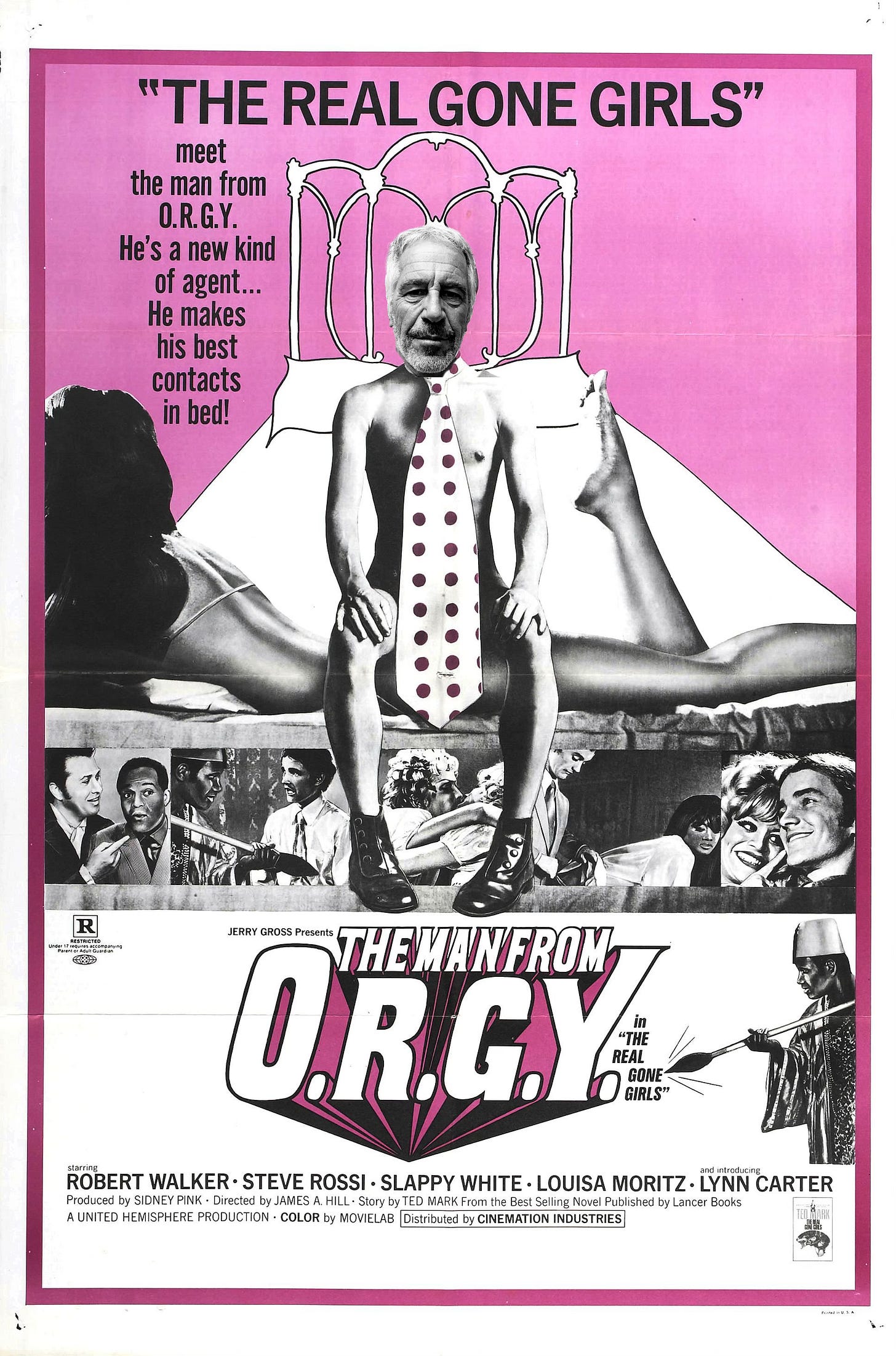





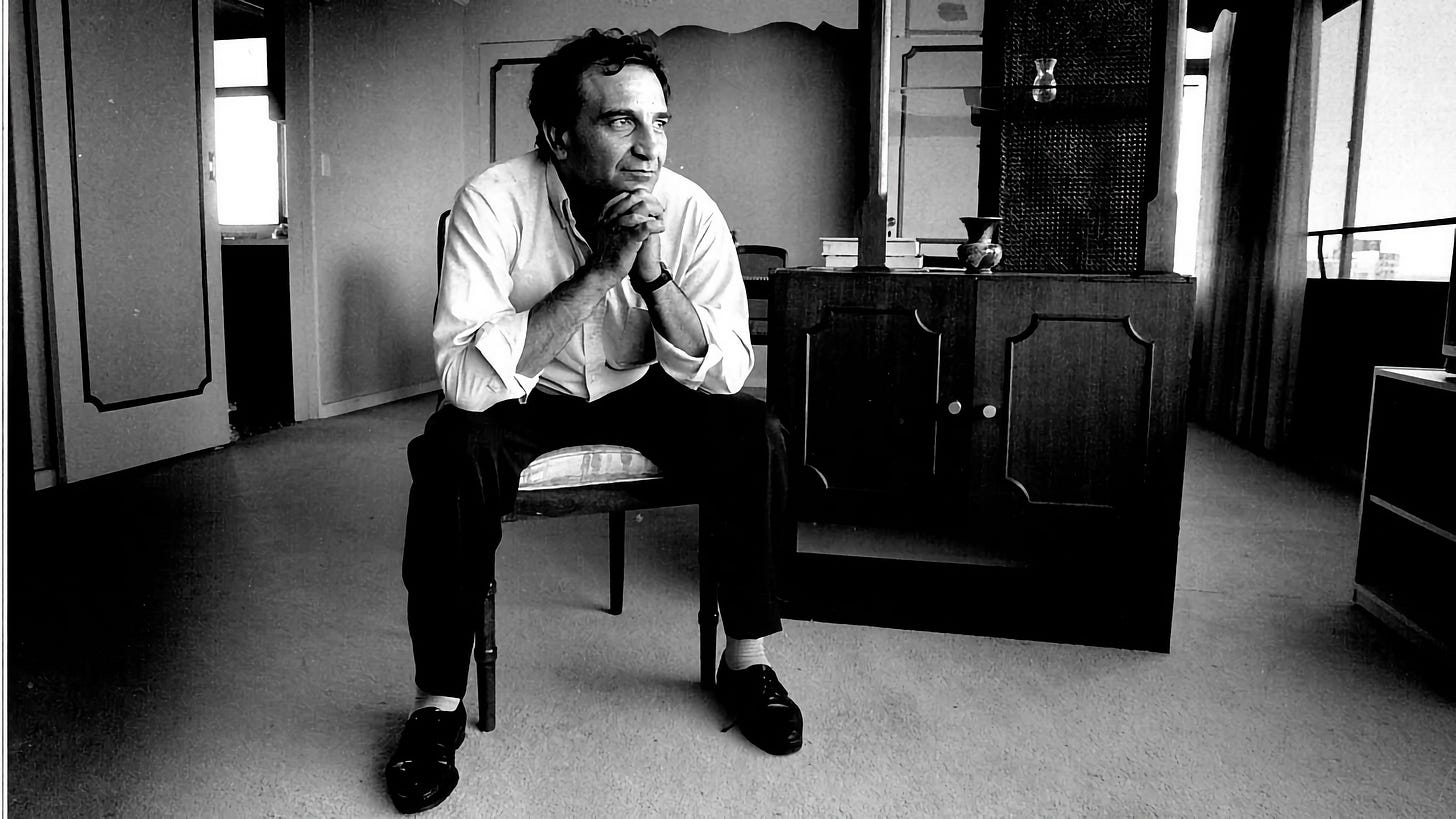




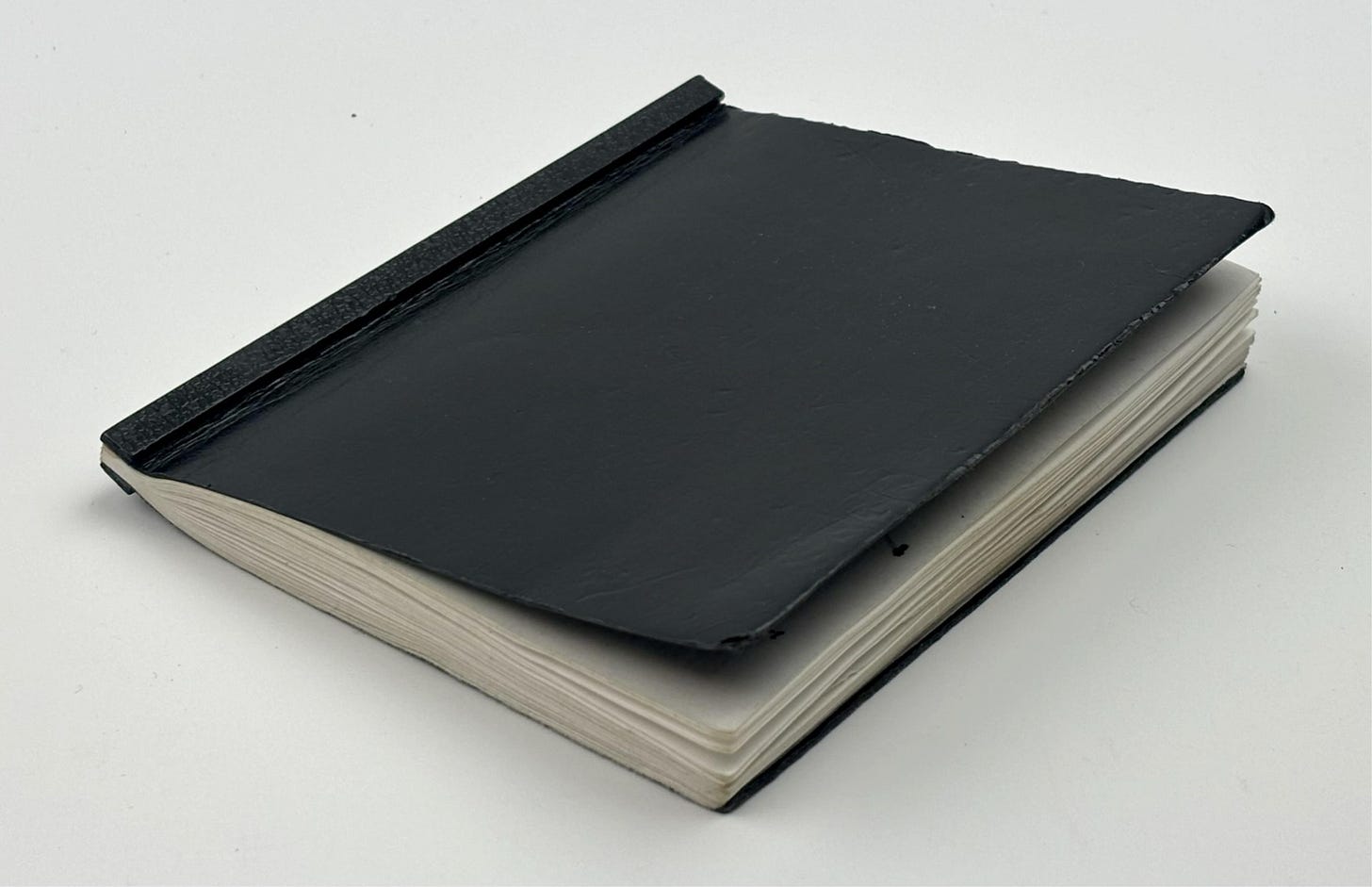
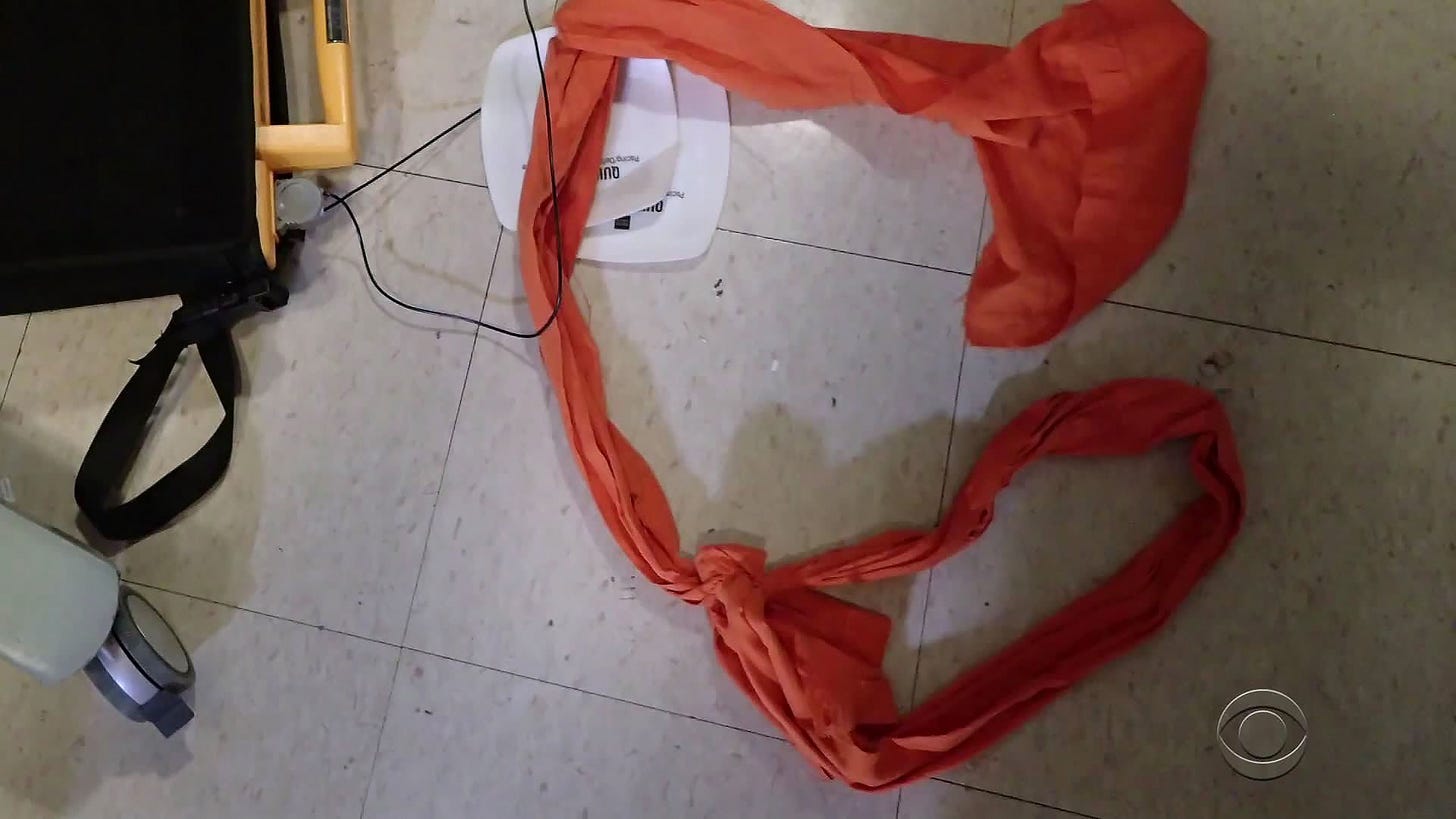


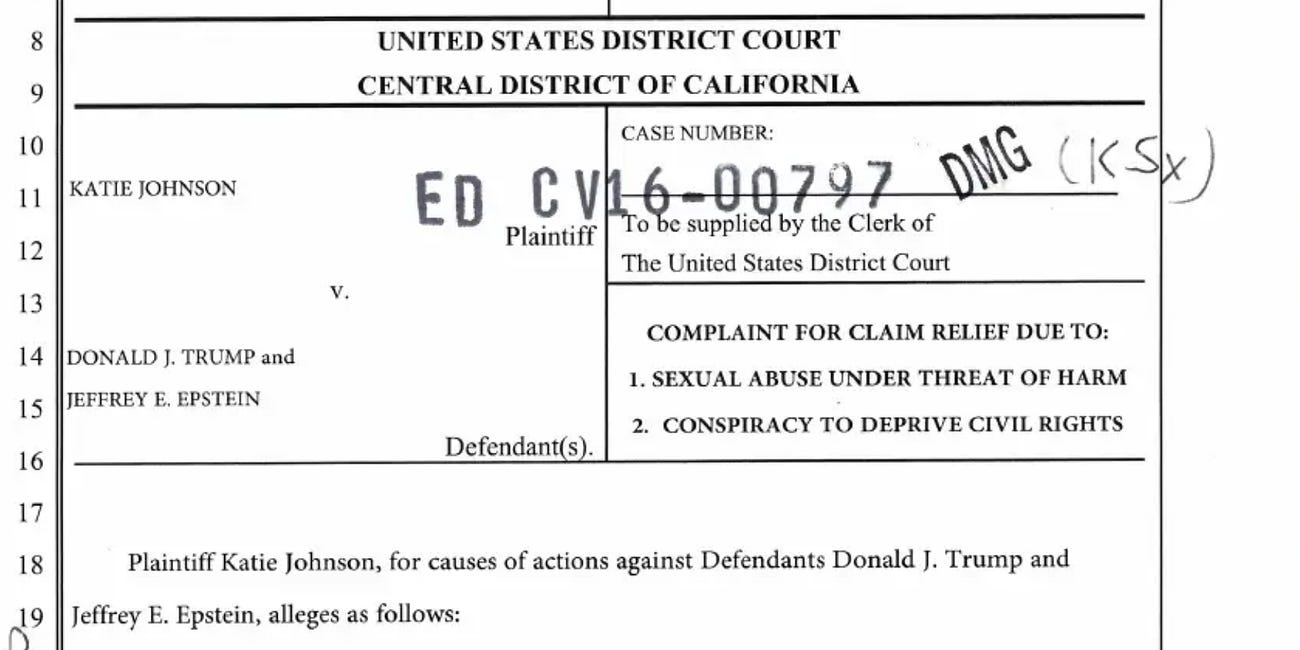
Perhaps you can find a better resolution image, but here is a painting by
Epstein victim Maria Farmer where you can actually identify individuals who were associated with Epstein in the painting.
https://blogger.googleusercontent.com/img/b/R29vZ2xl/AVvXsEgBdZ8bQh0gvLTJE0wAuBHm5AzKs6u8yfTK0ve7dAt7Xwyutn2YHzV2E2UndS82aqgV1ayHVjLBieV8rJZwPNNRuhTi8vJs0YzH48rUqAoFqCZLriiT5QQQO_vEFv0Gq9ZEXVyDinFRrP0/s1600/IMG_ORG_1594658204729.png
(For example, I believe that is Elon Musk at very top left, although this blogger doesn't identify as such)
Additionally, you may recall that Ghislaine Maxwell's attorney in her case, Bobbi Sternheim had a TOP SECRET/SCI security clearance. Those aren't particularly easy to get.